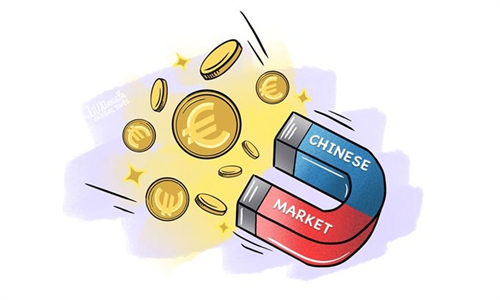
Illustration: Chen Xia/GT
The mounting losses Southeast Asia is suffering from the US practice of extending trade restrictions against China underscore the growing politicization of trade and the alarming rise of protectionism.This approach not only reflects a changing global trade landscape but also compels countries in Southeast Asia and elsewhere to more actively explore new markets and forge alternative trade partnerships in order to reduce their dependence on the US market.
The US has detained $3.56 billion worth of imports in all since its Uyghur Forced Labor Prevention Act (UFLPA) took effect in mid-2022, according to a VOA report, citing recent figures from US Customs and Border Protection. Some 86 percent of that amount, more than $3 billion worth, arrived from Malaysia, Thailand and Vietnam, while only $395 million arrived directly from China, said the VOA report over the weekend.
The data show that the actual impact of the UFLPA has far exceeded the direct export scope of China, affecting a wide array of countries and regions throughout the entire Asian supply chain. This situation not only underscores the severity of US trade protectionism but also raises significant concerns about the potential threats it poses to the stability and resilience of the global supply chain.
First of all, it is essential to note that the so-called accusations of "forced labor" are utter political lies fabricated by the US to suppress Chinese manufacturing. This politicization of trade issues not only distorts the truth of the matter but is at the expense of many export goods from Southeast Asia.
As an important part of the global economy, Southeast Asia's industrial chain is closely linked to the global market. However, its heavy reliance on the US market has increasingly exposed the region to the repercussions of US trade policies and geopolitical strategies. This dependence not only hampers the economic growth of these countries but also threatens regional stability and cooperation. The impact of the UFLPA may be just a microcosm of the situation.
While the US may seek to reshape the global industrial chain through its trade policies, the deep economic ties and interdependence between China and Southeast Asian countries make such attempts difficult to achieve. This external pressure may prompt Southeast Asian nations to place greater emphasis on cooperation with China, thereby jointly maintaining and strengthening their industrial and supply chains to foster regional economic stability and growth.
Economic and trade cooperation between Southeast Asian countries and China is becoming increasingly close, characterized by a continuous expansion in the scale of bilateral goods trade, flourishing services trade and robust mutual investment. This has resulted in a deep integration of industrial and supply chains.
In particular, in recent years, Southeast Asia, with its unique geographical advantages and market potential, has become the preferred destination for Chinese companies investing and expanding overseas.
As of the end of July, the cumulative bilateral investment between China and ASEAN countries had exceeded $400 billion. Therefore, any attempts to disrupt this industrial chain are both short-sighted and detrimental.
This underscores the importance for Southeast Asian countries to proactively safeguard their industrial chains in response to trade challenges from the US.
On the one hand, these countries can explore new markets by leveraging existing free trade agreements and potential multilateral mechanisms, such as the Regional Comprehensive Economic Partnership, to expand their export channels.
For instance, on October 10, China and ASEAN announced the "substantial conclusion" of Version 3.0 of their free-trade agreement. The new agreement, expected to be formally signed next year, will create more favorable conditions for innovative economic development in the region and promote the integrated development of regional industries.
On the other hand, Southeast Asian countries can also consider industrial transformation, nurturing their own domestic markets to reduce reliance on external markets. Additionally, Southeast Asian countries can unite with other affected nations and regions to jointly file complaints at the WTO, seeking resolution through international organizations, and exploring legal measures to safeguard their rights and interests.



